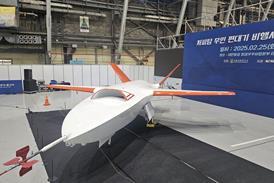USAir orders up to 400 Airbuses; American Airlines takes 103 Boeings now, with up to 630 in total in the next 22 years; Continental, 90 Boeings; GECAS, 45 Airbuses; Ansett Worldwide Aviation Services, 25 Boeings- Is the air-transport industry showing robust and welcome signs of recovery, or unhealthy and unwelcome signs of over-heating, going back to the bad old days of boom-and-bust? More importantly, why are airlines ordering so many aircraft, and why now?
On the surface, the placing of so many orders by so many major airlines has got to be good news, especially for Boeing and Airbus, the engine manufacturers and their suppliers. Such large orders spread over several years should give comfort to the industry, allowing it to plan its production rates forward with confidence - but do they? Take American's selection of Boeing as its sole supplier for the next 20years. The airline has not been a big buyer for several years, but now it has the potential for taking 30 or more airliners a year from one manufacturer - at current rates, that amounts to nearly two months' output for one customer alone.
Coping with that sort of demand, should it materialise, means a massive ramping-up of production - right at the point when the US airline industry is showing a levelling-off in its spectacular growth, which could be the first harbinger of the next cyclical downturn. Boeing and Airbus have to ramp up production anyway to fulfil firm orders, but the question of whether also to gamble on catering for the accompanying options is one which will allow neither company's executives to sleep easily.
The real problem for the manufacturers is whether the airlines or the air-transport infrastructure can cope with all these new airliners should they be built. Traffic forecasts throughout the industry point to a doubling of air traffic in the next 15 years. Judging by the huge number of narrowbodies which features in the latest order books - and the seeming reluctance of the airlines to commit to new large airliners - much of that traffic growth is going to be catered for by increased numbers of flights, rather than by bigger aircraft carrying more passengers. That runs counter to the popular belief that airliners are getting bigger (the average number of seats on aircraft operated by members of the Association of European Airlines has, for example, actually remained the same for the last two years).
If much of the projected traffic growth depends on increased flight frequencies, the capacity of the infrastructure will have to be expanded far beyond the limits envisaged so far. Despite the best efforts of international bodies and local service providers alike, however, there is nowhere near enough progress in this area to suggest that the infrastructure will be able to cope with a near-doubling of movements in the next 15 years.
If that is the case, what are the airlines going to do with all these airliners that they are ordering? Perhaps, very little. The one thing which ordering an airliner (or taking an option on one) does guarantee, is that your competitor cannot get hold of the aircraft which occupies that production slot, thus delaying his ability to acquire new aircraft with which to compete.
The fear that a competitor will get its orders in first, and thus lock other airlines out of delivery slots, may be enough to drive some airlines to order or option more aircraft than they need. That fear itself can give rise to a feeding frenzy in which the aircraft order becomes a tool of competition rather than of prudent planning. An artificial market built on such virtual orders will do nothing to secure the long-term stability of what is still a highly volatile industry.
The only counter to this lies in the hands of the manufacturers themselves: no deep discounts, and no delivery slots without substantial, non-refundable deposits. That way, airlines will order only what they need, knowing that they would have to sell any cancelled orders or options themselves to get their money back.
"The one thing which ordering an airliner does is to guarantee that your competitor cannot order that aeroplane."
Source: Flight International























